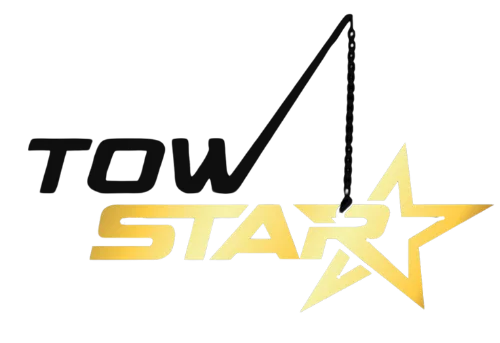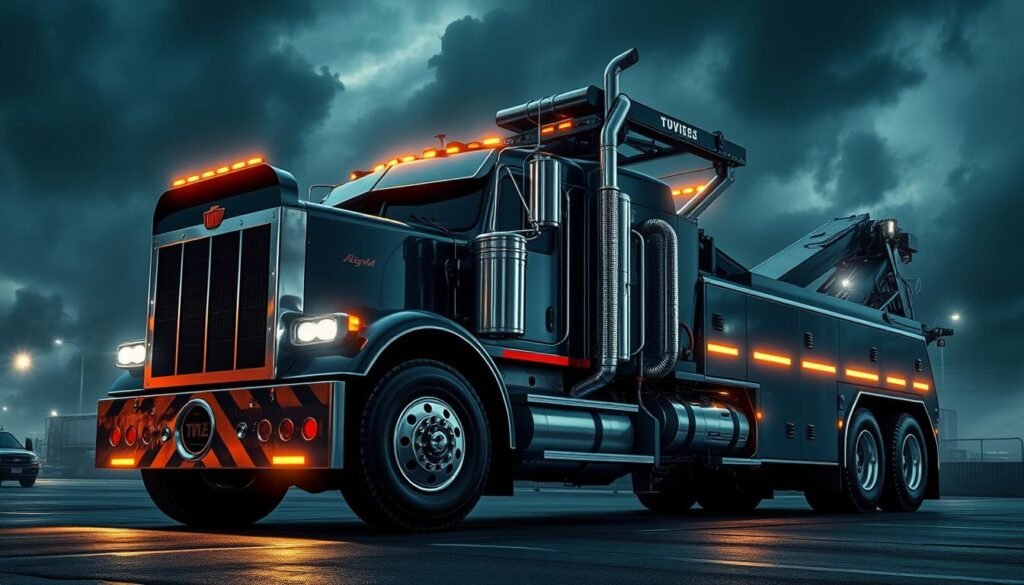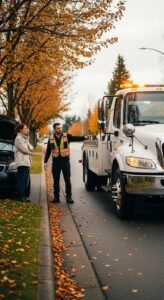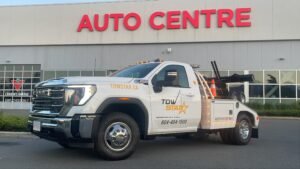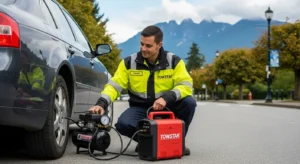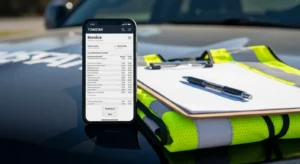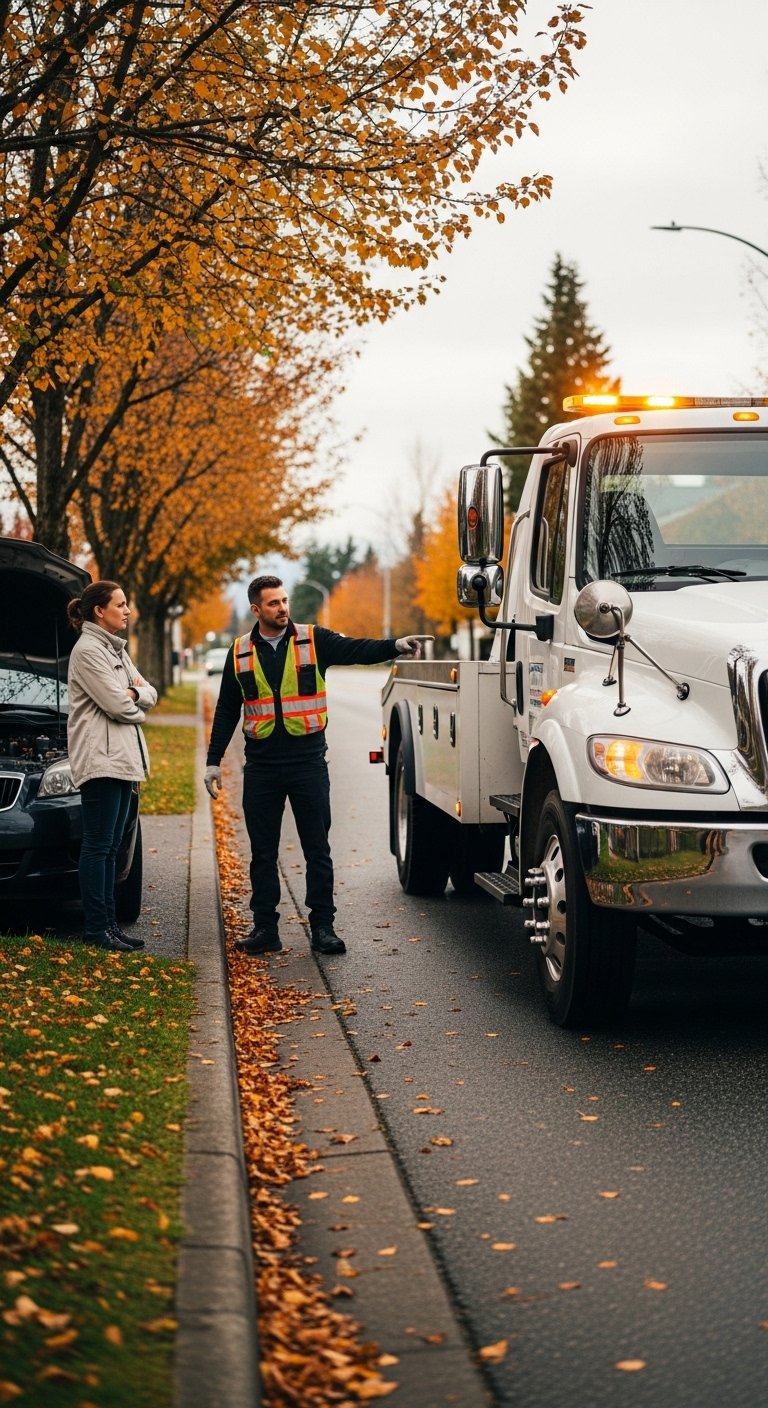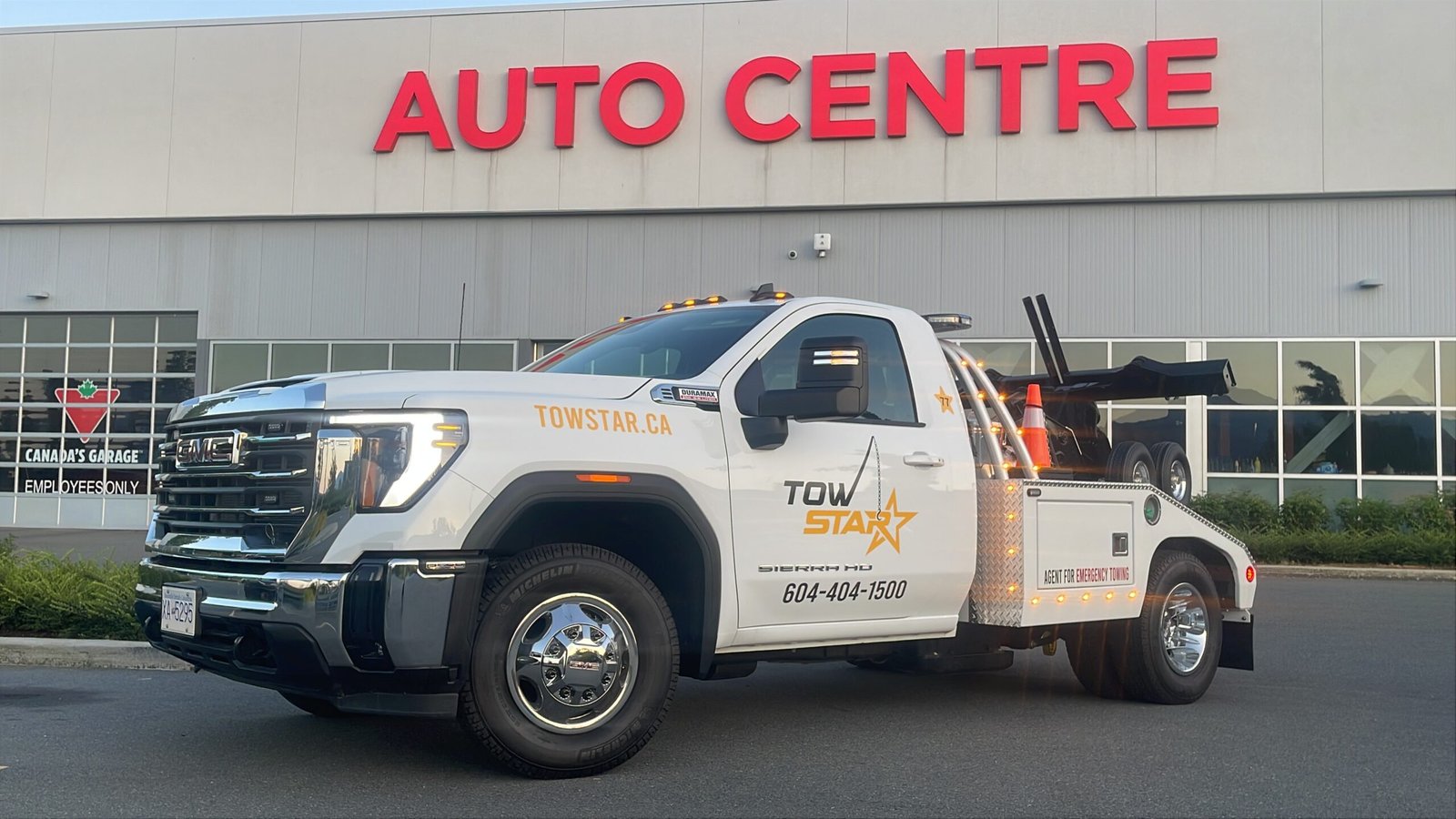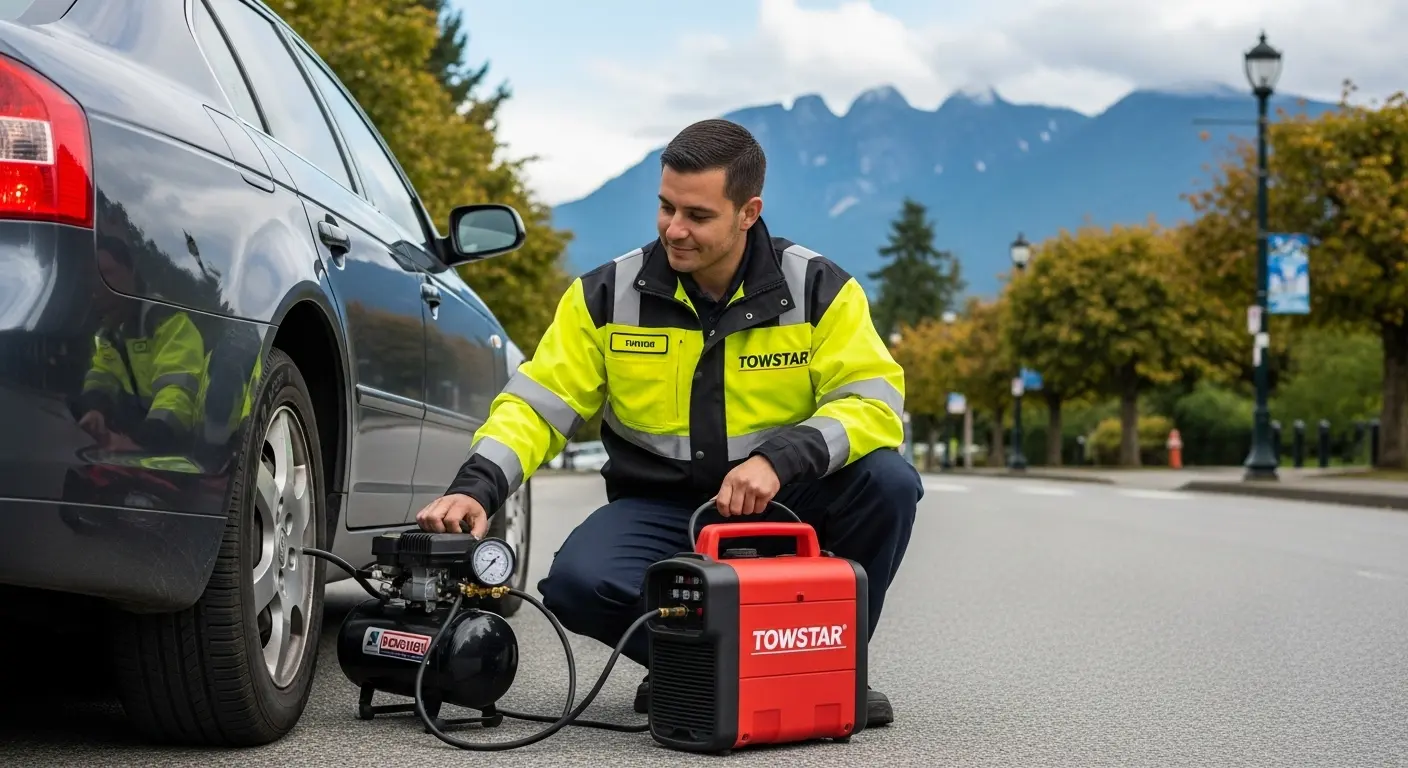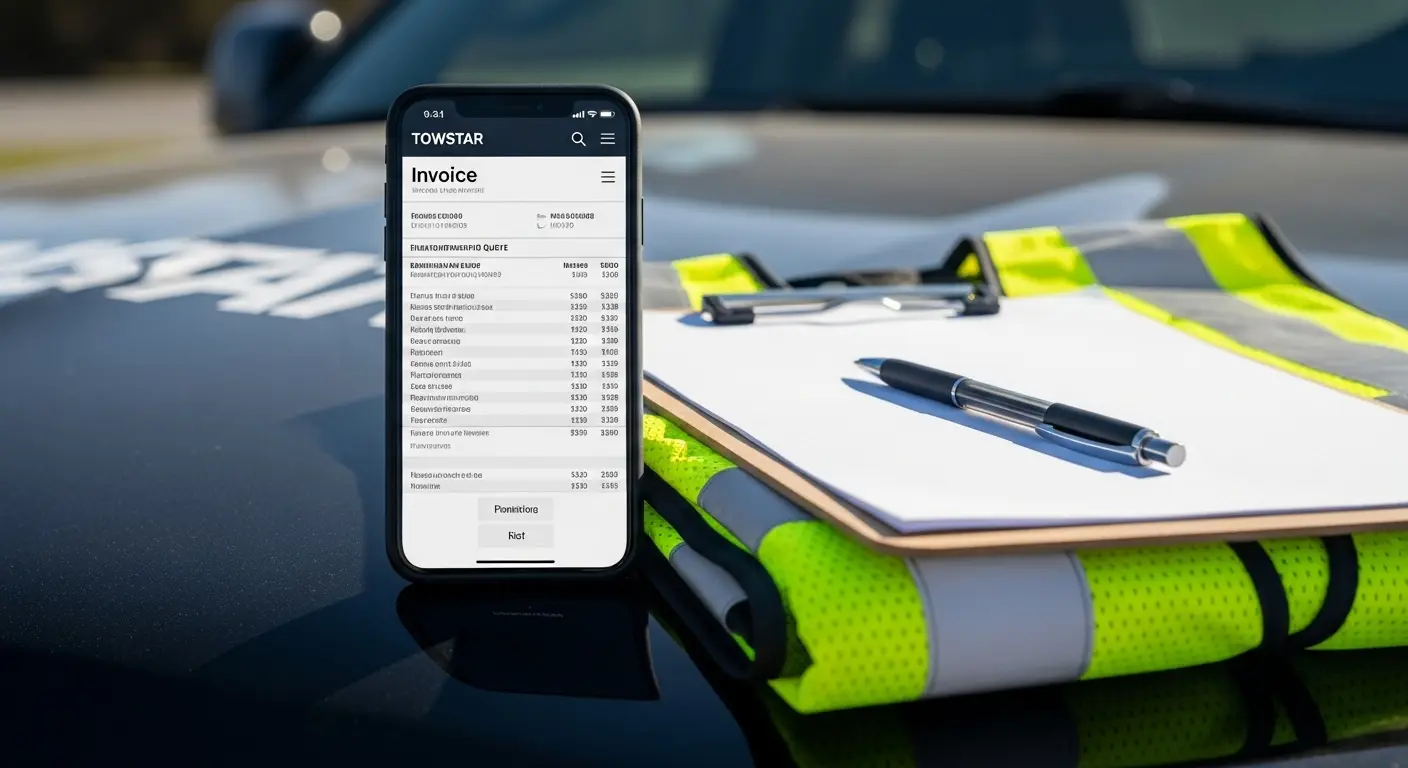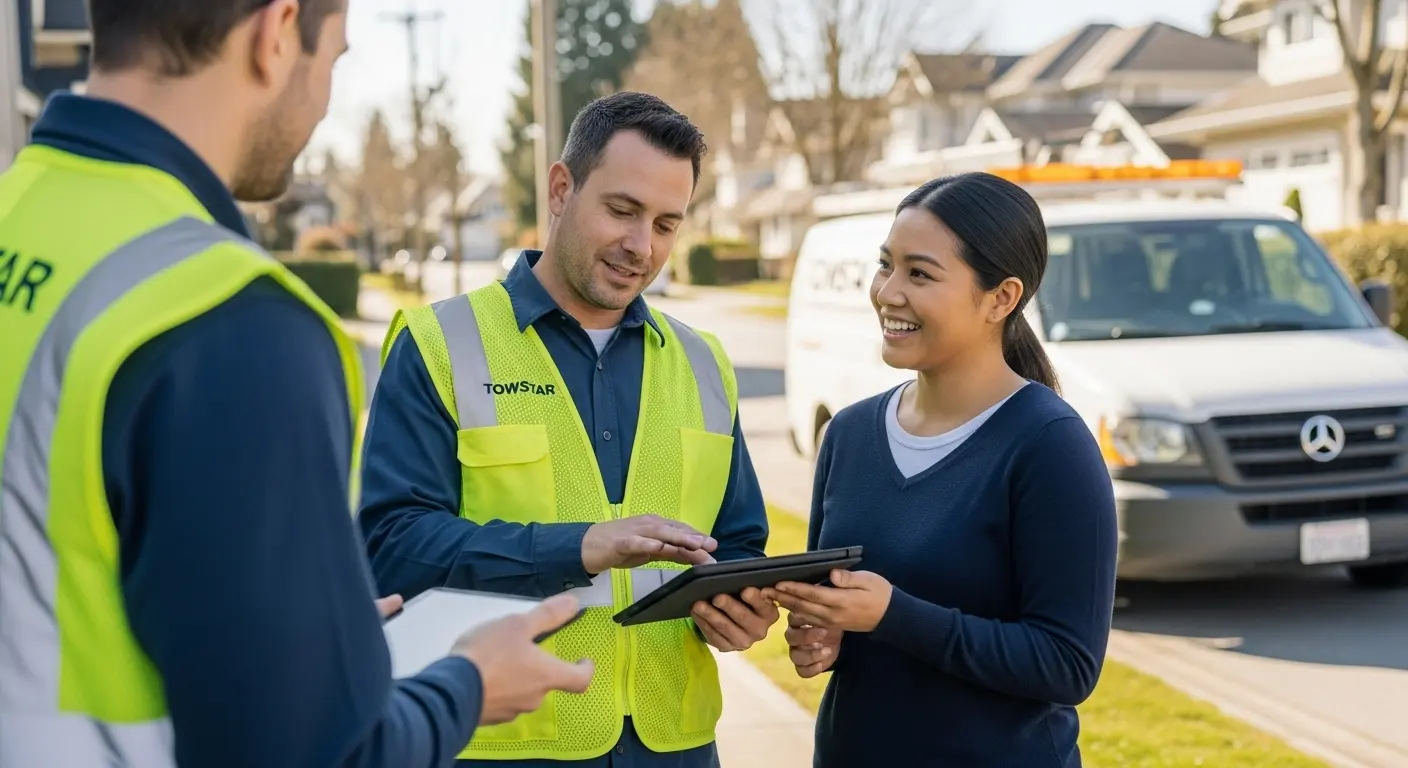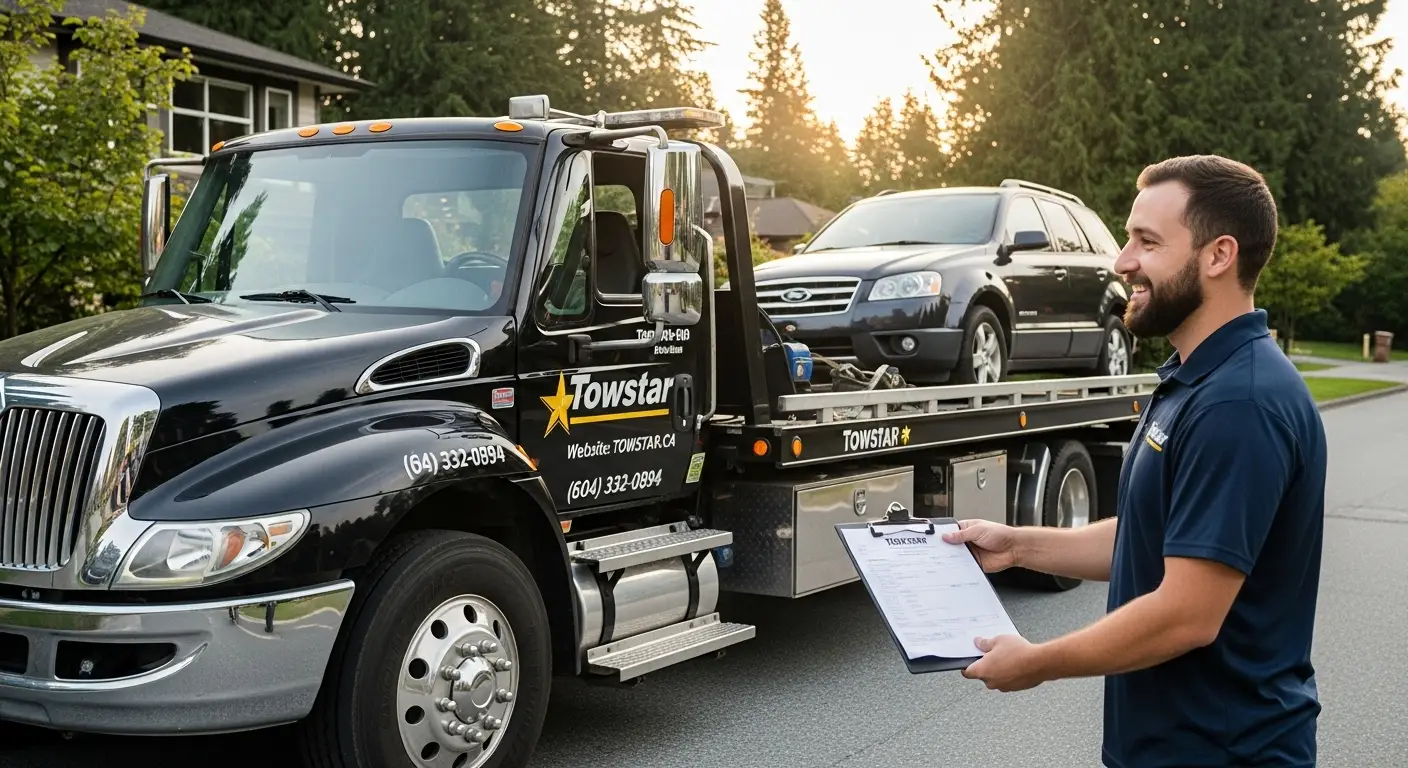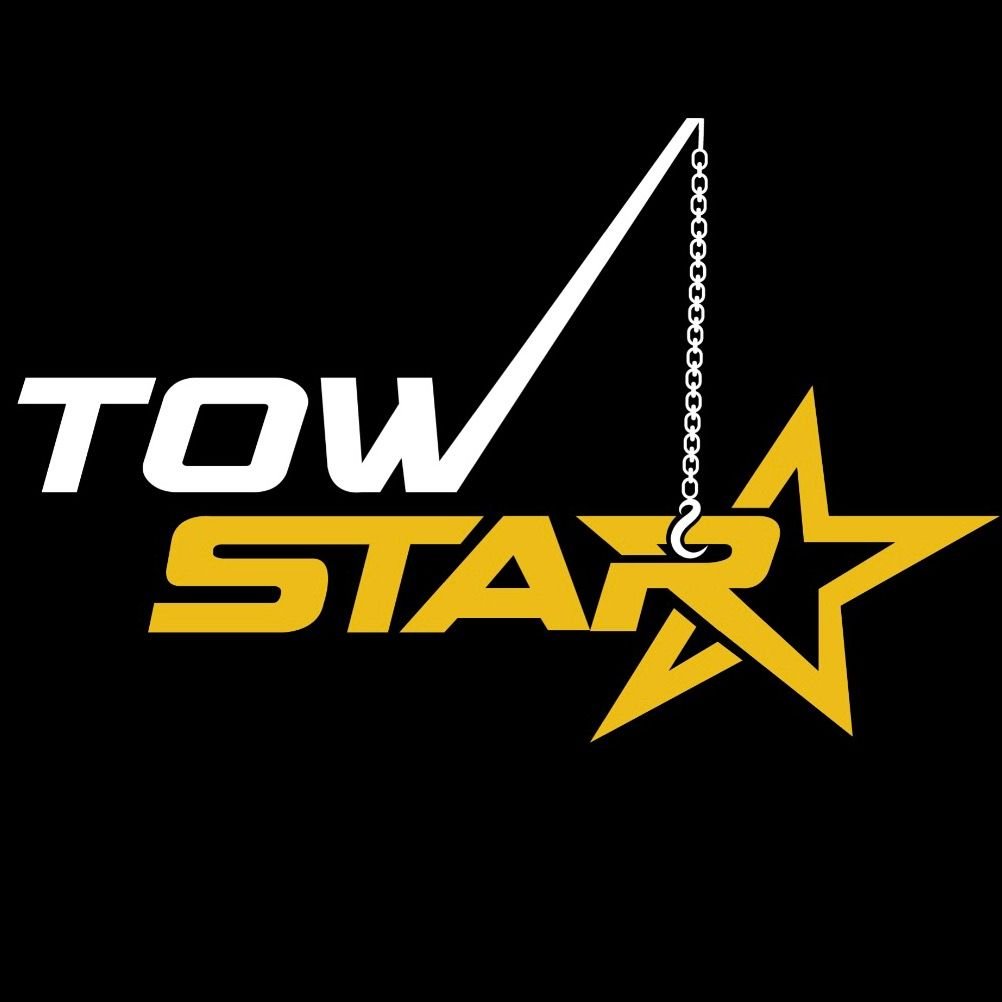Imagine being stuck on a snowy Canadian highway with a huge rig or oversized load. You might think to call the nearest towing services. But what if they come with the wrong equipment for your 10-tonne vehicle? Choosing the wrong option could lead to wasted time, extra costs, or even danger.
Not all towing vehicles are the same. Light-duty trucks are good for cars and small vans. But for heavier machinery, commercial vehicles, or trailers, you need something with more power. We’ll show you how to know when you need a heavy-duty tow truck.
Key Takeaways
- Vehicle weight over 3.5 tonnes? Light-duty trucks can’t handle it
- Specialized equipment like dual axles requires heavy-duty solutions
- Wrong towing methods risk damage to your vehicle’s frame
- Stuck in mud/snow? Extra power prevents hours of frustration
- Using undersized services often costs more in long-run repairs
- 24/7 availability matters for oversized loads on tight schedules
Trying to tow a moose with a bicycle is possible but not smart. Let’s look at five situations where you need industrial-grade help. By the end, you’ll know when to ask for the big rigs and how to find them quickly.
Understanding Heavy Duty Tow Trucks
When your vehicle is too big for regular tow trucks, heavy-duty ones come to the rescue. These trucks are not just big; they’re built with strength and technology for tough jobs. They’re key for commercial towing and big recoveries.
What Defines a Heavy Duty Tow Truck?
Heavy-duty trucks are the towing world’s superheroes. They handle vehicles over 17,000 lbs. They have:
- 25-ton hydraulic winches for stuck machinery
- Strong frames that don’t break under pressure
- Multi-axle systems for better weight balance
Certified operators run these trucks, trained for big towing jobs. You wouldn’t use a garden hose on a forest fire. Same with these trucks.
Common Uses for Heavy Duty Tow Trucks
These trucks are perfect for jobs where regular ones fail. Need to move a tipped-over cement mixer? Recover a school bus from a ditch? They’re experts at it. They’re also key for:
- Moving construction equipment around job sites
- Transporting disabled tractor-trailers
- Relocating oversized farm machinery
Differences Between Heavy and Light-Duty Towing
Choosing the wrong service can leave you stuck or cause damage. Here’s how they compare:
| Feature | Heavy-Duty | Light-Duty |
|---|---|---|
| Max Weight Capacity | 17,000+ lbs | Up to 10,000 lbs |
| Common Equipment | Dual winches, air brakes | Single hook, wheel lift |
| Typical Jobs | Semis, excavators | Cars, small SUVs |
Curious about costs for 2-ton trucks? Heavy-duty services need special permits and safety measures. These costs ensure safe cargo and quick recovery.
Sign 1: Your Vehicle’s Weight Exceeds Light-Duty Limits
If your vehicle is too heavy for light-duty trucks, it’s a safety risk. Heavy loads need special tools and skills. We’ll explain why weight is important and how to avoid accidents.
Weight Classifications in Towing
Towing services vary. Light-duty trucks can handle up to 10,000 lbs (4,500 kg). For heavier loads, you need a heavy-duty truck. Think of it like this:
| Vehicle Type | Weight Limit | Examples |
|---|---|---|
| Light-Duty | Up to 10,000 lbs | Cars, SUVs, small trailers |
| Heavy-Duty | 10,000+ lbs | Dump trucks, RVs, cement mixers |
Going over these limits can damage your vehicle and others. Heavy-duty recovery is about using the right equipment for big loads.
Common Vehicles That Require Heavy Duty Tow Trucks
Wondering if your vehicle needs a strong tow truck? These vehicles always need heavy-duty towing:
- Motorhomes & RVs: A loaded motorhome in Vancouver, BC can weigh 15,000+ lbs
- Construction Equipment: Cement mixers, excavators, and dump trucks
- Commercial Vehicles: Delivery trucks, buses, and tractor trailers
Using a light-duty truck for these jobs is like asking a bicycle to pull a freight train. Heavy-duty recovery services have special equipment and safety measures. Don’t risk your safety—choose the right truck for the job.
Sign 2: You’ve Encountered an Accident with a Large Vehicle
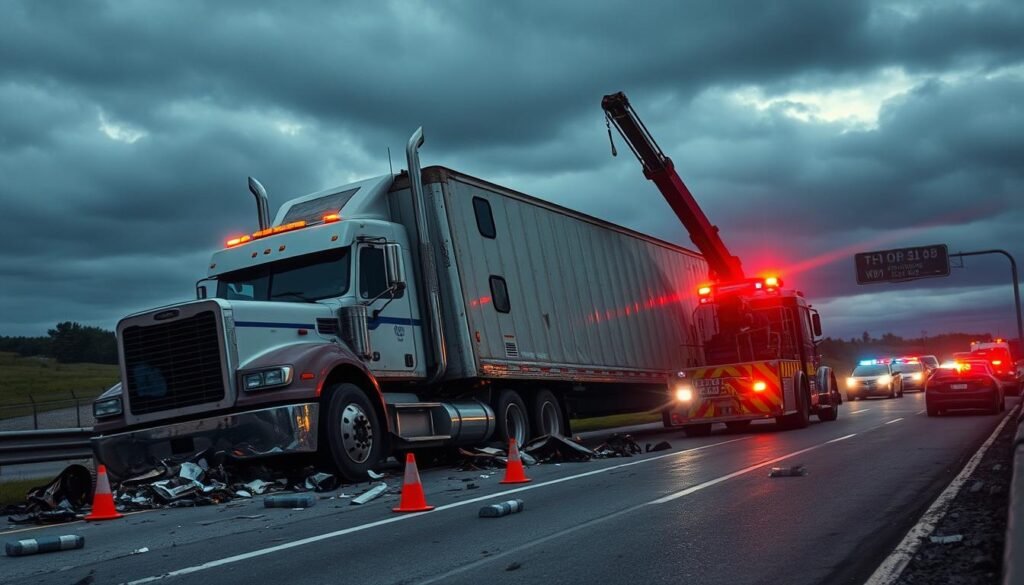
Looking at an overturned tractor-trailer or a tangled multi-vehicle collision? Light-duty towing won’t do. Large vehicle accidents need quick action and the right tools. The wrong equipment can make things worse.
Types of Accidents Requiring Heavy Duty Towing
Not all wrecks are the same. These four scenarios always need heavy-duty wreckers:
- Semi-truck rollovers blocking multiple lanes
- Multi-vehicle pileups involving buses/RVs
- Off-road recoveries of construction equipment
- Jackknifed trailers with compromised cargo
Importance of Specialized Equipment for Recovery
Standard tow trucks use basic hooks and chains. These can damage large vehicles. Heavy-duty wreckers have:
| Equipment | Purpose | Safety Benefit |
|---|---|---|
| Pivot cranes | Lifts vehicles upright | Prevents fuel leaks |
| Stabilizing arms | Secures unstable loads | Reduces rollover risks |
| Reinforced winches | Moves 25+ ton loads | Avoids equipment failure |
Experts use these tools to clear scenes fast and safely. This protects your vehicle and everyone around. That’s why calling specialized wrecker services is key in emergencies with large vehicles.
Sign 3: You’re Transporting Heavy Equipment
Standard towing methods are risky for hauling industrial machinery or oversized loads. Commercial towing is not just about power. It’s about precise handling for expensive equipment. If you’re moving big items like excavators or generators, here’s what you need to know.
Industries That Use Heavy Duty Tow Trucks
Some fields need professional flatbed hauling every day. These industries require equipment that won’t move during transport:
| Industry | Equipment Type | Towing Requirements |
|---|---|---|
| Construction | Excavators, bulldozers | Low-bed trailers, steel chain systems |
| Logging | Timber trucks, loaders | Winch systems, reinforced frames |
| Mining | Ore haulers, drills | Multi-axle configurations |
| Oil & Gas | Generators, pipeline parts | Specialized rigging for uneven terrain |
Safety Considerations When Towing Heavy Equipment
Transporting industrial gear is different from moving a car. One mistake could lead to expensive delays or dangerous accidents. Here are some rules to follow:
- Use steel chains, not straps: Heavy machinery shifts during transit. Chains provide 4x the holding power of nylon straps.
- Check weight distribution: Improper loading causes 37% of towing-related accidents. Professional services use load sensors.
- Secure loose components: Hydraulic arms or attachments must be locked in transport position.
Need to move construction gear in Surrey? Our construction equipment towing guide explains local regulations and best practices. Remember: When lives and livelihoods depend on your equipment arriving intact, only heavy-duty services deliver.
Sign 4: You Need to Move an RV or Bus
If your adventure vehicle is now just a decoration, you can’t use regular towing. RVs and buses are not just heavy. They have big frames and tricky shapes that need special care.
Imagine trying to get a garden hose through a needle. That’s what it’s like to move these big vehicles through tight spots without the right tools.
RV and Bus Towing Challenges
These big vehicles cause big problems for drivers and roadside assistance teams:
- Low-clearance bridges that could scrape roofs
- Narrow roads requiring precision navigation
- Weight distribution issues affecting stability
- Extended braking distances on highways
Impact of Size on Towing Choices
Your vehicle’s size decides what kind of help you need. Here’s why:
| Feature | Light-Duty Option | Heavy-Duty Solution |
|---|---|---|
| Weight Capacity | Up to 10,000 lbs | 35,000+ lbs |
| Clearance Height | Standard 13’6″ | Custom adjustable |
| Specialized Gear | Basic wheel lifts | Hydraulic tilt beds |
When you need to move your home-on-wheels, the right roadside assistance is key. Experts use GPS to avoid low bridges and plan big turns. They’ll also use strong straps to keep your vehicle safe.
Big vehicles need big care. The wrong towing service can cause damage or danger. Always check a company’s experience with big loads before you let them move your vehicle.
Sign 5: Standard Towing Services Are Inadequate
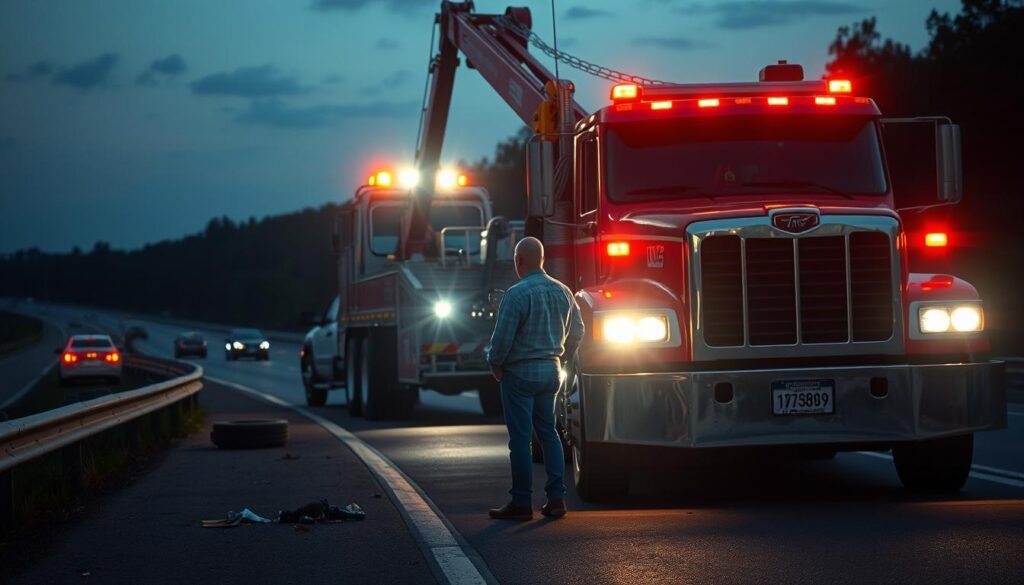
If your tow truck driver seems unsure about hooking up your vehicle, it’s a big warning sign. Light-duty trucks are okay for small cars, but they can’t handle heavy loads or tricky situations. This could leave you stuck.
Limitations of Light-Duty Tow Trucks
Light-duty tow trucks are made for quick fixes, not heavy lifting. They can only handle up to 10,000 lbs, which is not enough for big buses, construction equipment, or large RVs. They also don’t have the right tools like hydraulic lifts or stabilizing frames. Here’s how they compare to heavy-duty options:
| Feature | Light-Duty | Heavy-Duty |
|---|---|---|
| Weight Capacity | Up to 10,000 lbs | Up to 100,000 lbs |
| Common Uses | Cars, motorcycles | RVs, dump trucks, farm equipment |
| Safety Gear | Basic chains | Air brakes, load stabilizers |
Signs of Inadequate Towing Services
Not sure if your towing company can handle the job? Watch for these red flags:
- No flatbed trailer: Essential for vehicles with dead engines or all-wheel drive.
- Driver uncertainty: If they’re asking YOU how to secure the load, walk away.
- Overheating risks: Light trucks straining under heavy loads may brake poorly or overheat.
In emergency towing scenarios, hesitation costs time—and money. Always confirm the company’s equipment and training before they start working. Your transmission (and peace of mind) will thank you.
Benefits of Using Heavy Duty Towing Services
When your oversized vehicle needs help, heavy-duty towing is more than just strength. It’s about smart solutions for extreme situations. These services use special equipment and expert knowledge to tackle challenges that light-duty trucks can’t handle. Choosing the right service is important for several reasons:
Enhanced Safety and Reliability
Heavy-duty wrecker services use advanced technology for safety. They have hydraulic lift systems to prevent cargo shifts during transport. They also use reinforced stabilizers to control swaying on uneven roads. Operators are trained for the worst, like:
- Recovering overturned tractor-trailers without damaging cargo
- Securing hazardous material spills using climate-controlled containment
- Navigating tight urban spaces with precision steering attachments
This isn’t just guesswork—it’s science. They make sure your vehicle arrives safely by calculating weight distribution and monitoring loads in real-time.
Professionalism and Expertise
You’re not just getting a driver with heavy-duty recovery teams. You’re getting certified professionals who know large vehicles well. They will:
- Assess damage using industry-approved checklists
- Choose equipment based on your vehicle’s make and cargo type
- Follow provincial safety protocols for oversize loads
These teams have the right credentials, like Commercial Vehicle Operator Registration and TDG (Transportation of Dangerous Goods) certification. They understand your needs, whether you’re moving mining equipment through Alberta’s ice roads or rescuing a tour bus in Banff.
How to Choose the Right Heavy Duty Towing Company
Choosing a heavy duty towing service is serious. Your truck, trailer, or RV needs a team that’s ready for emergencies. They should be equipped and certified to avoid leaving you stranded. Let’s look at what’s important when picking a towing service.
Key Factors to Consider
Not all towing services are the same. Here’s a quick checklist:
- Certifications: Look for recovery operation licenses (like WreckMaster) and provincial permits.
- Insurance Limits: Make sure they have at least $2 million liability coverage—ask for proof!
- 24/7 Availability: Breakdowns happen anytime. Check if they’re available 24/7.
- Specialized Equipment: They should have GPS-tracked trucks, rotators, or air cushion systems for tough recoveries.
Questions to Ask a Towing Service
Don’t fall for scams by asking clear questions:
- “Can you show me your commercial vehicle operator’s registration (CVOR)?”
- “What’s your maximum towing capacity for truck and trailer combinations?”
- “Do your drivers have HAZMAT training if I’m hauling fuel or chemicals?”
| Service Feature | Basic Towing | Mid-Level | Premium Heavy Duty |
|---|---|---|---|
| Certified Recovery Techs | ❌ No | ✔️ Limited | ✔️ Full Training |
| Insurance Coverage | $500k | $1M | $5M+ |
| GPS Tracking | ❌ No | ✔️ Basic | ✔️ Real-Time Updates |
Pro Tip: Always ask for a written quote before they start towing your vehicle. Hidden fees can sneak up on you!
Preparing for Heavy Duty Towing
Getting ready for heavy-duty towing makes the experience smoother. Whether it’s a commercial truck breakdown or an RV stuck in snow, knowing what to do helps. Here are the key things to know before the pros arrive.
Essential Equipment for Safe Towing
Heavy-duty tow trucks need special tools for oversized loads. Look for strong wheel lifts, hydraulic systems, and recovery hooks. Flatbed hauling is safest for big vehicles, as it reduces sway and keeps things secure.
Quality operators also use LED lights and reflective barriers. These help in low-visibility conditions.
What to Do Before Help Arrives
Stay calm and focus on safety. Move to the shoulder if you can, turn on hazard lights, and set up emergency triangles. Secure loose items inside to prevent them from moving during transport.
Take photos of your vehicle’s condition for insurance claims. If stranded, call a roadside assistance provider. They can send updates or arrange temporary shelter.
Preparing isn’t just about checklists. It’s about trusting experts who care for your vehicle. With the right gear and steps, you can handle heavy-duty challenges safely and efficiently.
FAQ
What makes heavy-duty tow trucks different from regular tow trucks?
Heavy-duty tow trucks have special features like reinforced flatbeds and 25-ton winches. They are built for big vehicles like semis and buses. Regular trucks can only handle smaller cars or pickup trucks.
How do I know if my vehicle needs heavy-duty towing?
If your vehicle weighs over 4,500 kg, like a loaded dump truck, you need heavy-duty towing. Light-duty trucks can’t handle these weights safely. It could damage your vehicle or cause accidents.
Why can’t I use a light-duty tow truck after a semi-truck accident?
After a semi-truck accident, you need special tools like stabilizing arms and hydraulic lifts. Light-duty trucks don’t have these, which could make things worse.
What industries rely most on heavy-duty towing services?
Logging, mining, and oil/gas companies need heavy-duty towing for big equipment. They use steel chains and have certified drivers to keep everything safe during transport.
Why is towing an RV or bus riskier with light-duty services?
RVs and buses are heavy and long. They need careful handling to avoid damage. Light-duty drivers might not have the skills for this.
What red flags indicate an underqualified towing service?
Watch out if they don’t have a flatbed or seem hesitant. Real heavy-duty services have the right equipment and offer 24/7 service. They should show you their certifications.
How should I prepare before a heavy-duty tow truck arrives?
Make sure loose parts are secure and document any damage. Park on level ground to help the driver. These steps can prevent delays and damage.
Why pay more for heavy-duty when light-duty is cheaper?
Cheap light-duty towing can damage your vehicle or lead to insurance issues. Heavy-duty services are safer and offer better insurance coverage.
What certifications should a heavy-duty towing company have?
Look for WreckMaster certifications and hazmat training. They should have at least million in liability insurance. Ask about oversized permits and 24/7 service before hiring.
